Enoki Mushrooms were popularized by the Japanese. They are known by the scientific name Flammulina Velutipes. In Japanese Enoki means “huckleberry” which implies that this mushroom grows on the shrub in Japan. In this article, we will see how to identify enoki mushrooms, their habitat, how to cultivate them, and many more. So let’s jump in…
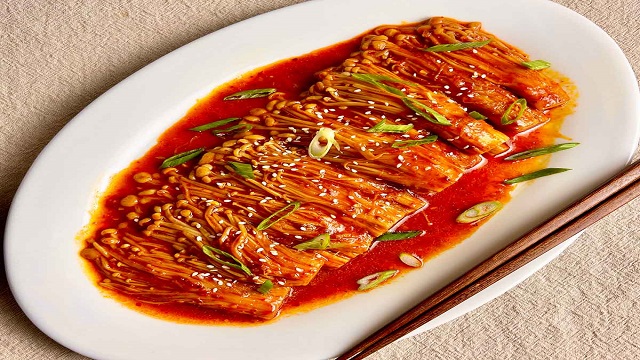
Enoki Mushrooms (Flammulina Velutipes)
Enoki Mushrooms are popularized by the Japanese, wild enokis are short and furry-footed mushrooms. They are also known as winter mushrooms because of their fruiting from late autumn to early winter.
They are usually cultures in chilled growing rooms and have abnormally small caps and long stems. Their long stems are achieved by increasing the carbon dioxide levels and limiting the light exposure while cultivating them.
They are known by different common names these are
- Enokitake (Japanese for “The Snow Peak Mushroom”)
- The Winter Mushrooms
- The Velvet or Furry Foot Collybia
- The Golden Mushroom (Thailand)
How to Identify them?
The cap of the Enoki Mushrooms is usually between 1-5 cm in diameter. As they age their cap change shape from convex to plane to upturned. The cap is smooth and its color is bright to dull yellowish to yellowish brown. Their gills are white to yellow and are attached to the stem.
Stem is usually short 1-3 inches, having a yellow to brown color and it darkens as it ages. Their stem is covered with a dense coat of fine brown hairs near the base of the mushroom. Enoki Mushrooms are extremely sensitive to carbon dioxide and light levels.
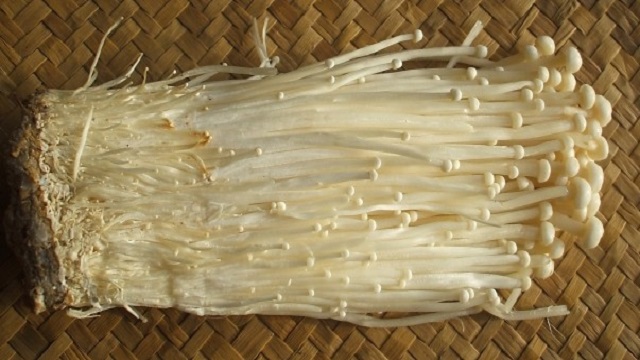
Where can we find Enoki Mushrooms and their Natural Habitat?
Enoki Mushrooms are widespread throughout the temperate regions of the world. You can find them growing from sea level to tree line. They commonly grow in the late fall through early winter. They could be primarily found on hardwoods and occasionally on conifers.
The specialty of this mushroom is that it can freeze, thaw, and then continue to grow.
Difference between Wild and Cultivated Enoki Mushrooms
The fruiting bodies of the mushrooms growing in the wild on the decaying logs look totally different from the ones cultivated in a controlled environment.
The caps of wild mushrooms are smooth and gelatinous, up to 10cm in diameter, and are light tan to light orange towards the center but with pale yellow edges. The gills in wild mushrooms do not run down the stalk and are pale yellow.
How Light intensity and CO2 concentration enhance their growth
When they grow in the wild (moderate light/ low CO2), they are short-stemmed with caps as wide as the stems are long. Under lighted and high carbon dioxide conditions, the stem greatly elongates and is yellow to white and the cap remains relatively small.
While CO2 determines the length of the stem, the light intensity is an overriding factor in influencing the formation and development of the cap.
Under high CO2 and no light conditions, a thin stem may form usually without any caps. Depending on the environment the stems can be as short as 1 inch to as long as 12 inches.
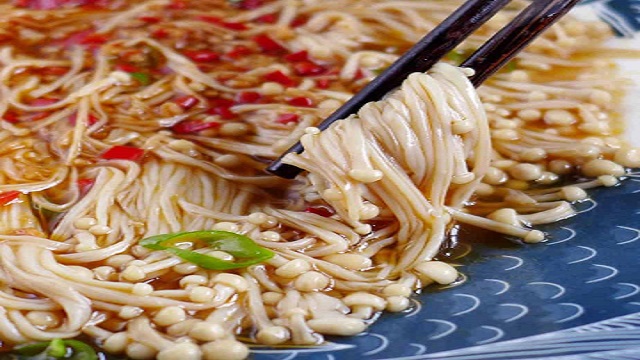
How to grow Enoki Mushrooms
Most strains of enoki mushrooms require a cold shock and growth in temperature ranges from 40-60 F. Strains of this mushroom vary in their sensitivity to light and carbon dioxide levels.
Japanese cultivators have invented the technique of fruiting in bottles in which the bottles are topped with cylindrical inserts of clear plastic or paper. The cylinder pools carbon dioxide and the stems elongate. This technique encourages the formation of highly uniform flushes of mushrooms in each bottle.
Enoki’s Mycelial characteristics
The mycelium is white, longitudinally linear, and tinged light brown to spotted with golden yellow-brown zones with age. The surface roughens resemble sandpaper.
Substrate for fruiting of Enoki Mushroom
A wide variety of hardwoods like oak, alder, poplar, cottonwood, aspen, willow, birch, beech, etc. could be used as substrates for the growth of enoki mushrooms.
Some softwoods such as Douglas fir can also be used as substrate for their growth. One advantage of using Douglas fir for the growth of mushrooms is that this wood has a natural resistance to green mold.
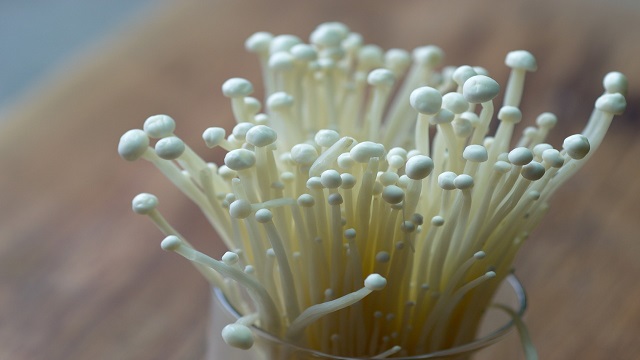
Containers for fruiting Enoki Mushrooms
For growing Enoki mushrooms polypropylene bottles could be used for easy handling and speed of harvesting. If Enokis are to be grown in bags, then the sidewalls of the bags should extend at least 6 inches above the plane of the fruiting surface. This will encourage the desirable elongated stems.
What is the yield potential for enoki mushrooms?
If grown in 1-litre bottles, the yield of 3-5 ounces could be easily achieved for the first flush.
Environment requirement for the Fruitbody development of Enoki Mushrooms
For fruiting the following environments are required for maximum yield
| Temperature | 10-16 C |
| Relative Humidity | 90-95% |
| Duration | 5-8 Days |
| CO2 | 2000-4000ppm |
| Fresh Air Exchange | 2-4 per hours |
| Light Requirement | 20-50 lux |
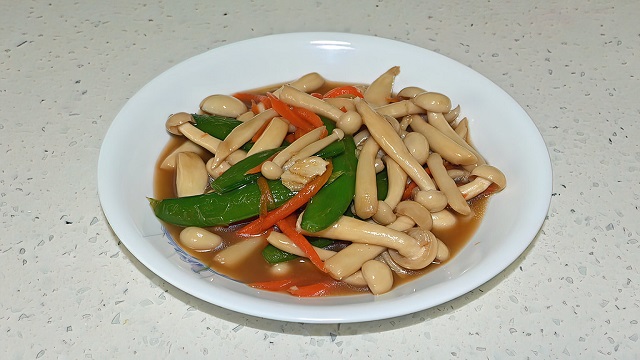
How to harvest Enoki Mushrooms?
Well to pick several hundred mushrooms, one by one, is quite a daunting task. What you can do is you can stimulate the elongation of the stem through CO2 elevation, after which cropping can be quickly accomplished.
If you are culturing in bottles, then firmly grasp the cluster and pull them outward from the bottle. Now trim the residual substrate debris off with the help of a knife or a pair of scissors.
Enoki Mushrooms Nutrition
The nutrient content may vary slightly depending on the substrate used for their cultivation. The protein content of the mushroom ranges from 17% to 31 %.
The fat content varies from 1.9 to 5.8%. The fiber in them is about 3.7%.
Apart from them, they are also rich in vitamins and minerals like thiamin, niacin, folates, calcium, zinc, iron, Sodium, etc.

Enoki Mushrooms benefits and their Medicinal Properties
Enoki mushrooms are rich in antioxidants which help in neutralizing harmful free radicals in our body.
They may also slow the growth of cancer cells. According to an epidemiological study conducted in Japan, it was found that a community of Enoki growers had an unusually low cancer rate. The frequent consumption of mushrooms was thought to be the reason behind this. Zeng et al. (1990) have also published studies that show the anti-tumor properties of this mushroom.
They are also beneficial for heart health. One study on hamsters who consumed enoki mushroom extracts had lower levels of LDL cholesterol.
Is it OK to eat enoki mushrooms raw?
According to FDA recommendations, enoki mushrooms should not be consumed in raw form, especially for pregnant women, people aged 65 or older, or someone who has a weakened immune system. You should also keep them separate from other foods that will be consumed raw.
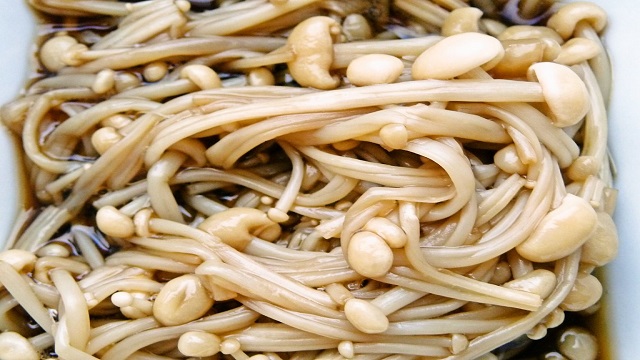
How to cook Enoki Mushrooms
Firstly like with other mushrooms clean them with water. Now you can cook them in different styles some of them are
Saute: You can sauté them in the pan they cook within minutes. It won’t take more than 3-4 minutes to sauté them in a pan with little oil.
Microwave: You can also cook them in the microwave you just need to place the mushrooms in the microwave bowl and wait for 1-2 minutes. Now you can season them to your taste and they are ready to serve.
Fried Enoki Mushrooms
Though you can deep fry them the better alternative health-wise is to shallow fry them with less oil. Fry them for 1-2 minutes until the color changes to golden. While frying remember to flip them to get the golden color on both sides.
How to cook Enoki Mushrooms for ramen
Enoki mushrooms can be incorporated into ramen in several ways some of them are
- You can add trimmed mushrooms to the ramen broth at the end of cooking and let them cook for 2-3 minutes and they are ready for serving.
- You can also sauté them or stir fry them and use them as a side dish for your ramen.
Final Thoughts
Like Oyster Mushrooms, this mushroom’s appearance depends on the environment in which they are grown. Apart from being easy to cultivate, they are beneficial for our health. They are a good source of antioxidants, they help to reduce LDL cholesterols and they also have anti-cancer properties. One must include them in their diet for a healthy life.
FAQs
Question: How many calories do Enoki Mushrooms have?
Answer: They have just 37kCal per 100 grams.
Question: How long to boil Enoki Mushrooms?
Answer: It will only take 1-2 minutes to boil them for serving.
Question: How long do Enoki Mushrooms last?
Answer: If stored properly in a refrigerator they can last for about 7 to 10 days.
Question: Are Enoki Mushrooms poisonous?
Answer: No, they are not poisonous.
Question: What do Enoki Mushrooms taste like?
Answer: They have a mild sweet taste and have a chewy texture.
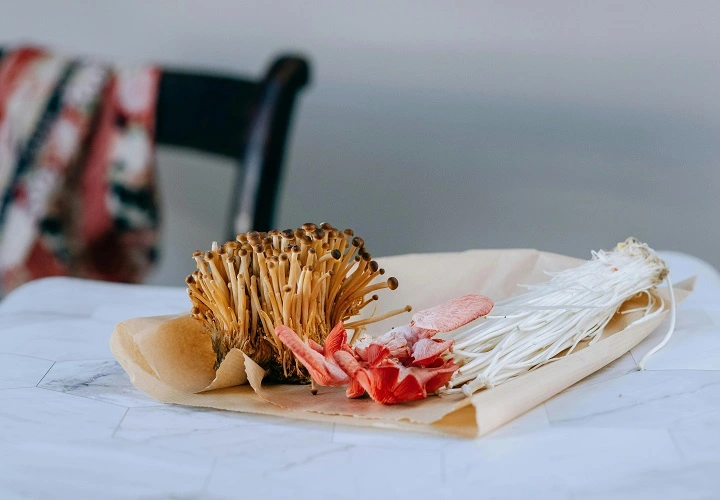
3 thoughts on “Enoki Mushrooms: How to Grow Enoki Mushrooms in 2024 Comprehensive Guide”